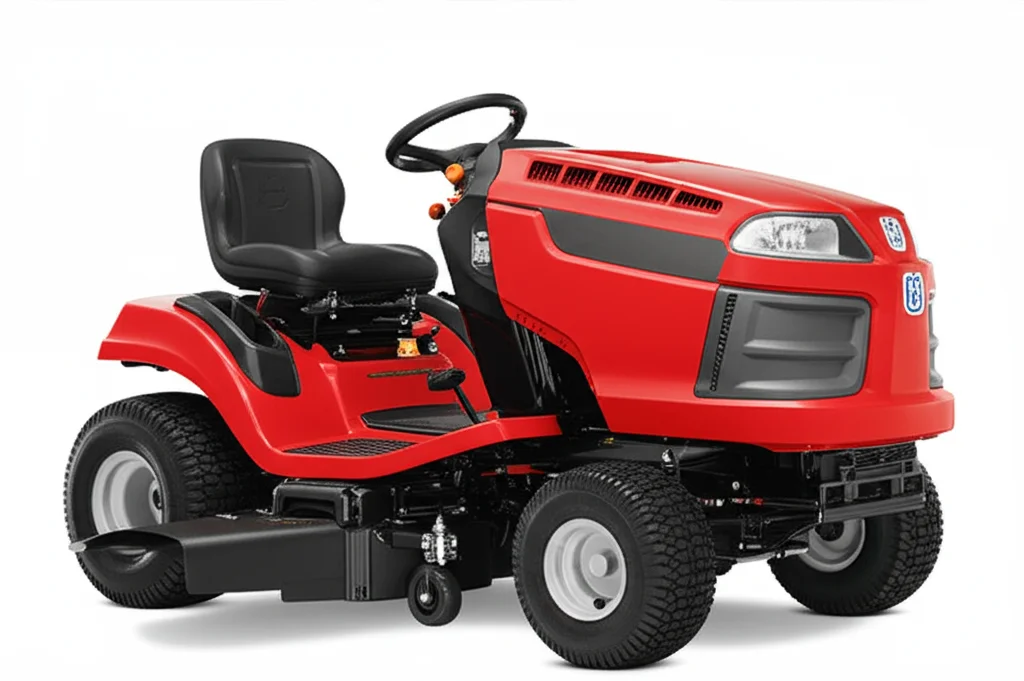· Riding Mower Repair · 6 min read
Husqvarna Riding Mower Steering Problems

Husqvarna Riding Mower Steering: Troubleshooting Common Issues
Is your Husqvarna riding mower pulling to one side, feeling sluggish to turn, or exhibiting other steering problems? Don’t worry, you’re not alone! Steering issues are a relatively common concern for Husqvarna riding mower owners. This article will walk you through the most frequent causes of these problems and provide you with practical solutions to get you back to mowing with ease. We’ll cover everything from simple adjustments to more involved repairs, helping you diagnose and fix your Husqvarna’s steering.
Takeaway:
- Check the tie rod ends for wear or looseness.
- Inspect the steering sector and linkage for damage.
- Ensure proper tire inflation and equal tire wear.
- Verify the steering wheel shaft is secure and functioning correctly.
Quick Answer: Husqvarna riding mower steering problems often stem from loose or worn tie rod ends, a damaged steering sector, or issues with the steering linkage. Regularly inspecting these components and maintaining proper tire pressure can prevent many steering issues.
1. Understanding Your Husqvarna Riding Mower Steering System
Before diving into fixes, let’s quickly understand how your Husqvarna’s steering works. Most Husqvarna riding mowers utilize a sector and pinion steering system. This system translates the rotation of the steering wheel into lateral movement of the front wheels. The key components include the steering wheel, steering shaft, steering sector, tie rods, and spindles. A properly functioning system ensures smooth and responsive steering. Understanding these parts will help you pinpoint the source of the problem when things go wrong. If you’re experiencing issues with your mower’s overall performance, you might also want to check for Husqvarna riding mower transmission problems.
2. Loose or Worn Tie Rod Ends: A Common Culprit
One of the most frequent causes of steering problems in Husqvarna riding mowers is loose or worn tie rod ends. These connect the steering linkage to the spindles, allowing the wheels to turn. Over time, these ends can develop play, leading to imprecise steering and a feeling of looseness. To check them, jack up the front of the mower safely and try to wiggle each tie rod end. Any noticeable movement indicates wear and the need for replacement. Replacing tie rod ends is a relatively straightforward repair that can significantly improve steering responsiveness.
3. Inspecting the Steering Sector and Linkage
The steering sector is the heart of the steering system, converting the rotational motion of the steering wheel into linear motion. The linkage connects the steering wheel to the sector. Damage to either of these components can cause significant steering issues. Look for bent or broken linkage parts, and check the steering sector for excessive play. A damaged steering sector often requires professional repair or replacement. Ensure all bolts and connections within the linkage are tight. If you’re having trouble getting your mower to move at all, it might be related to a separate issue, like Husqvarna riding mower won’t move forward or reverse.
4. Tire Pressure and Wear: Often Overlooked
Believe it or not, incorrect tire pressure or uneven tire wear can dramatically affect steering. Low tire pressure can make the steering feel heavy and unresponsive. Uneven wear can cause the mower to pull to one side. Always check and maintain the recommended tire pressure for your Husqvarna model (usually found in the owner’s manual). Also, inspect your tires for uneven wear patterns, which could indicate alignment issues or suspension problems. Proper tire maintenance is a simple yet effective way to improve steering and overall mower performance.
5. Steering Wheel Shaft Issues: Checking for Play
The steering wheel shaft connects the steering wheel to the steering sector. If this shaft is loose or damaged, it can cause play in the steering and make it difficult to control the mower. Check the shaft for any signs of bending or cracking. Also, ensure that all bolts and fasteners securing the shaft are tight. A loose steering wheel shaft can be a safety hazard, so address this issue promptly. Sometimes, a problem with the gas pedal can mimic steering issues, so it’s worth checking if your Husqvarna riding mower gas pedal is not working.
6. Hydraulic Steering Systems: Specific Considerations
Some Husqvarna riding mowers, particularly zero-turn models, utilize hydraulic steering. These systems rely on hydraulic fluid to power the steering. If you have a hydraulic steering system, check the fluid level and look for any leaks in the lines or pump. Low fluid levels or leaks can cause sluggish steering or complete steering failure. Bleeding the hydraulic system may be necessary if air has entered the lines. Hydraulic systems require specialized knowledge, so consider consulting a professional if you’re not comfortable working with them. If you’re dealing with a zero-turn mower, you might also want to explore Husqvarna zero-turn steering problems.
7. Addressing Steering Issues on Zero-Turn Mowers
Zero-turn mowers have a unique steering system utilizing lap bars or levers to control individual wheels. Problems often arise from issues with the steering arms, linkages, or the drive system itself. Check for loose connections, worn bushings, or damaged steering arms. Ensure the lap bars or levers move smoothly and engage the drive system properly. Uneven tire wear is particularly critical on zero-turn mowers, as it can significantly affect steering and maneuverability. If you’re experiencing issues with your zero-turn mower’s parking brake, it could also impact steering, so check out Husqvarna zero-turn parking brake not working.
FAQ: Husqvarna Riding Mower Steering
Q: Why does my Husqvarna riding mower pull to one side? A: Pulling to one side can be caused by uneven tire pressure, uneven tire wear, a bent steering component, or a dragging brake. Check tire pressure first, then inspect the steering and brake systems for any issues.
Q: How do I adjust the steering on my Husqvarna riding mower? A: Adjustments typically involve tightening tie rod ends or adjusting the steering sector. Consult your owner’s manual for specific instructions for your model.
Q: What does it cost to repair Husqvarna riding mower steering? A: Repair costs vary depending on the problem. Replacing tie rod ends might cost $50-$100 in parts, while a steering sector replacement could be $200-$500 or more, including labor.
Q: Can I fix Husqvarna riding mower steering problems myself? A: Many steering problems can be fixed with basic tools and mechanical knowledge. However, more complex issues, like steering sector damage or hydraulic system problems, may require professional assistance.
Conclusion
Addressing Husqvarna riding mower steering problems doesn’t have to be daunting. By systematically checking the tie rod ends, steering sector, linkage, tires, and steering wheel shaft, you can often diagnose and fix the issue yourself. Remember to prioritize safety and consult your owner’s manual for specific instructions for your model. Maintaining proper tire pressure and regularly inspecting these components will help prevent future steering problems and keep your Husqvarna running smoothly. If you’re still struggling, don’t hesitate to seek help from a qualified mechanic. Keeping your steering in top shape ensures a safe and enjoyable mowing experience.

